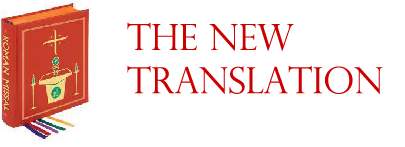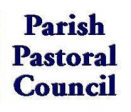
Did you know that the translation of the Mass which we currently use is going to change? The structure of the Mass is not changing. The order and the actions of the Mass remain unchanged. The readings at Mass are not changed. However, with the introduction of the new addition of the Roman Missal throughout the English-speaking world, we will notice a change in how the Mass sounds.
The words we use at the moment have been in use since 1975 and in September we will begin to use a new translation. We will be publishing a series of short articles which will help us understand what these changes are and why they have come about. These articles will also be included with our Parish Bulletin each week.
View our New Translation Articles
View Liturgy Ireland’s PDF of The New Translation
Until 1963, Mass was celebrated in Latin throughout the world. The Second Vatican Council allowed Mass to be celebrated in the spoken language of the people. There was no fundamental change to the Mass itself, just the language being used. The English translations which came out after Vatican II were intended to be temporary. Over the years, we have come to realise that some of the original translation did not accurately reflect the original Latin. Now after 40 years, the new translation has finally been passed and we will begin using it in September.
Why A New Translation of the Missal?
Up until the 1960s, Mass was celebrated in Latin throughout the world. Vatican II allowed that local languages could be used, and in 1970, Pope Paul VI agreed the official Latin text that could be used as a basis for all translations. It was translated into some languages better than others; English was done quickly, and some of the richness of the Latin text was “lost in translation”. The new translation which will be used from September reflects the original words, meaning and style of the Latin. In addition, the translators were asked to strengthen the biblical language and images in the texts and to reintroduce some theological vocabulary that may have been lost over the years.
In the years since 1975 when our current Missal was published, a number of additional texts have been made available for use in the Mass (additional Eucharistic Prayers, Masses of the Blessed Virgin Mary and Masses for over twenty new Feasts of Saints, for example, St Pio of Pietrelcina (Padre Pio), St Maximilian Kolbe and Irish saints). The new (third) edition of the Roman Missal will include all of these additions.
We have plenty of time to get used to these changes. Why not take time to browse the new translation on the Internet (NB: Link goes to a PDF file on the Liturgy Ireland website).
Over the next weeks and months, we will keep you informed of the changes, and together, we’ll make the transition easier.
Resources
The following resource sheets look at how The New Translation will affect the various ministries in our parish. These files are in PDF format.
- Ministry of Distributing Holy Communion
- Minstry of Music
- Ministry of Reader
- Ministry of Sacristan
- Ministry of Altar Server
We will add more of these resource sheets as they become available








